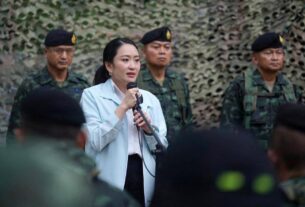Niigata Prefecture Governor Hideyo Hanazumi has given the green light for a partial restart of the Kashiwazaki-Kariwa nuclear power plant, the world’s largest, moving Japan a step closer to revitalizing its nuclear sector and reducing reliance on imported fossil fuels.
The approval removes a major obstacle for Tokyo Electric Power Co (Tepco) to restart one or two of the plant’s largest reactors. However, Hanazumi will still need to secure a vote of confidence from the prefectural assembly, set to begin its session on December 2.
This restart would mark Tepco’s first reactor restart since the 2011 Fukushima disaster, which prompted the shutdown of all 54 of Japan’s nuclear reactors. Since then, Japan has leaned heavily on fossil fuel imports, leaving its energy supply exposed to global market fluctuations.
Residents in Niigata remain divided over the restart. While some support it for energy security and economic reasons, others remain cautious about safety. Hanazumi emphasized the importance of providing accurate safety information to help local communities make informed decisions.
Japan’s new Prime Minister, Sanae Takaichi, has expressed support for increasing nuclear restarts to strengthen energy security and reduce the cost of imported energy, which currently accounts for 60–70% of the country’s electricity generation. Last year, Japan spent ¥10.7 trillion (RM282 billion) on imported liquefied natural gas (LNG) and coal—a significant portion of its total import costs.
Chief Cabinet Secretary Minoru Kihara highlighted the importance of the restart in reducing electricity prices and securing decarbonized power sources.
Out of the 54 reactors operational before Fukushima, only 14 of the remaining 33 operable reactors have been restarted. Tepco plans to bring online units No. 6 and No. 7, generating 2,710 megawatts combined, about a third of Kashiwazaki-Kariwa’s total capacity of 8,212 MW. Some of the other five units may be decommissioned.
In October, Tepco confirmed the No. 6 reactor’s systems were ready for startup following fuel loading checks. Analysts at Kpler have already adjusted Japan’s LNG import estimates downward by three million metric tons to 63 million tons next year, anticipating nuclear restarts.
Meanwhile, Kansai Electric Power, Japan’s leading nuclear operator, plans to explore building a new reactor in western Japan, the first since the Fukushima disaster.
Tepco shares closed 1.9% down today, reflecting investor caution after reports of mishandled confidential documents at the plant. The company continues to pay compensation for the Fukushima Daiichi disaster, the world’s worst nuclear accident since Chernobyl in 1986.
For the people of Niigata and Japan, this restart is more than numbers and energy policies—it’s a story of resilience, recovery, and cautious hope. Communities that have lived in the shadow of Fukushima now watch closely, balancing safety concerns with the promise of a more stable, self-reliant energy future.





